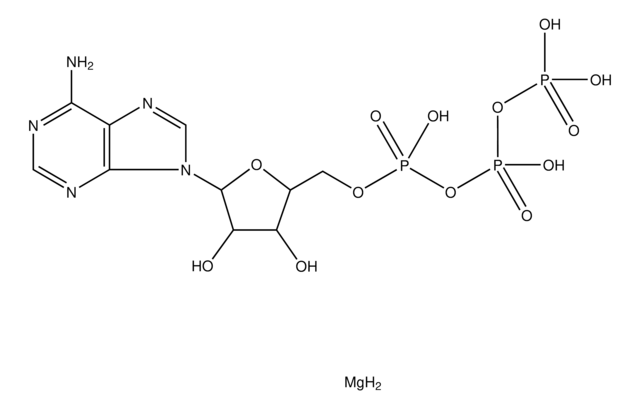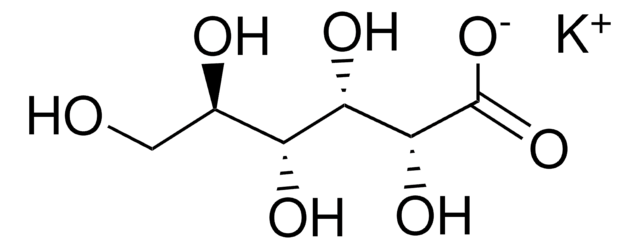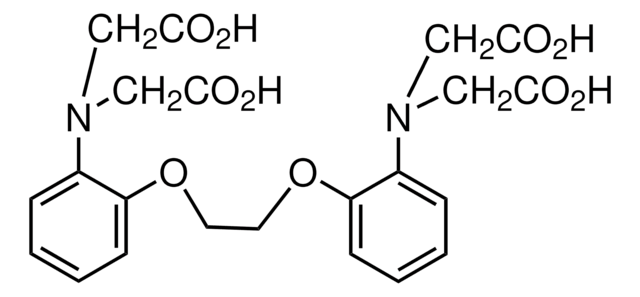E3889
Ethylene glycol-bis(2-aminoethylether)-N,N,N′,N′-tetraacetic acid
for molecular biology, ≥97.0%
Synonym(s):
EGTA, Egtazic acid, Ethylene-bis(oxyethylenenitrilo)tetraacetic acid, Glycol ether diamine tetraacetic acid
About This Item
Recommended Products
grade
for molecular biology
Quality Level
Assay
≥97.0%
form
powder
reaction suitability
reagent type: chelator
loss
≤1.0% loss on drying
mp
241 °C (dec.) (lit.)
foreign activity
DNAse (exonuclease), NICKase (endonuclease), RNAse, and protease, none detected
SMILES string
OC(=O)CN(CCOCCOCCN(CC(O)=O)CC(O)=O)CC(O)=O
InChI
1S/C14H24N2O10/c17-11(18)7-15(8-12(19)20)1-3-25-5-6-26-4-2-16(9-13(21)22)10-14(23)24/h1-10H2,(H,17,18)(H,19,20)(H,21,22)(H,23,24)
InChI key
DEFVIWRASFVYLL-UHFFFAOYSA-N
Looking for similar products? Visit Product Comparison Guide
Application
- in Dulbecco′s phosphate-buffered saline (DPBS) to induce the weakening of cell-to-cell junctions
- as an extracellular calcium chelator to study the role of calcium in axonal mitochondria degeneration
- as a component in lysis buffer for lysing mouse mucosal cells for western blot analysis
Biochem/physiol Actions
Storage Class Code
11 - Combustible Solids
WGK
WGK 2
Personal Protective Equipment
Choose from one of the most recent versions:
Already Own This Product?
Find documentation for the products that you have recently purchased in the Document Library.
Customers Also Viewed
Our team of scientists has experience in all areas of research including Life Science, Material Science, Chemical Synthesis, Chromatography, Analytical and many others.
Contact Technical Service












